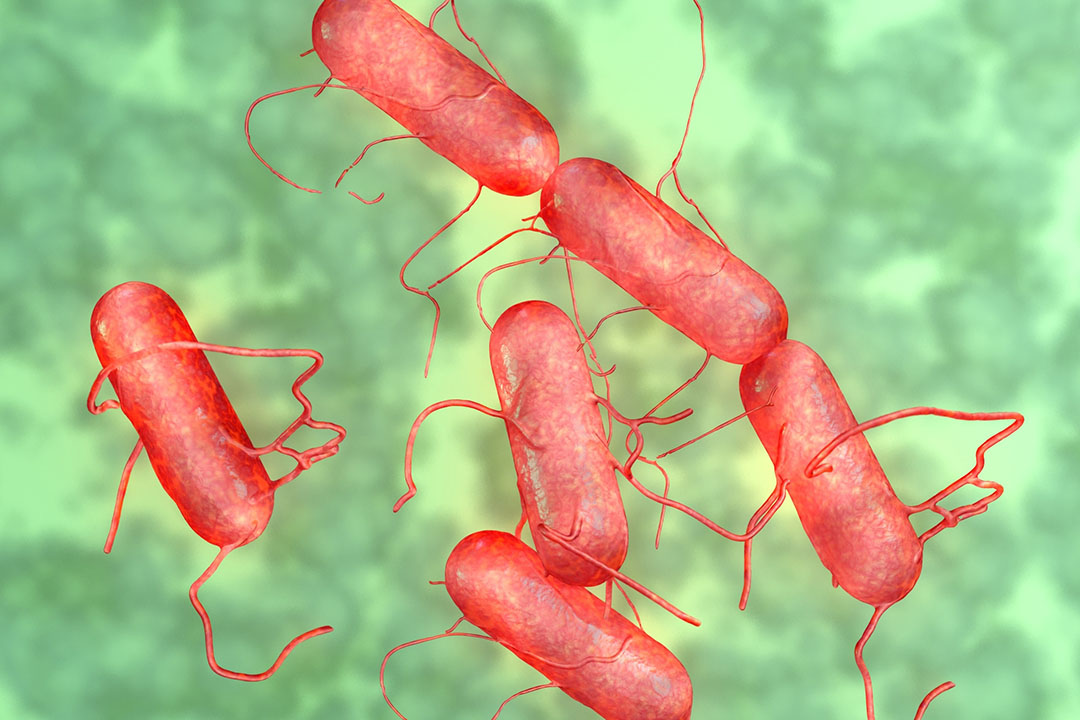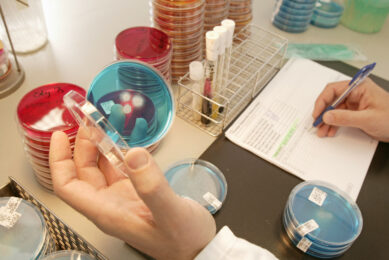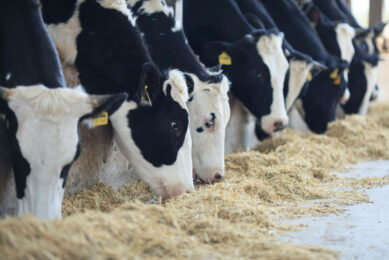Effect of antibiotic withdrawal on the gut

Public demand to reduce the use of sub-therapeutic antibiotic growth promoters (AGP) in poultry feeding has resulted in greater adoption of antibiotic-free poultry production systems. But, what is the effect of antibiotic withdrawal from poultry feed on the gut microbial community, host performance and immunity, and the prevalence of pathogens?
Supplementation of antibiotics as sub-therapeutics improves bird feed efficiency and maintain the gut health, growth and development. In North America, antibiotic growth promoters (AGPs), commonly used in the poultry industry include:
- avilamycin
enramycin
monensin - penicillin
- virginamycin
- bacitracin methylene disalicylate (BMD)
BMD is commonly used in the broiler diet for the prevention and control of necrotic enteritis, as well as improvement of weight gain and feed efficiency. Inclusion of antibiotics in the poultry diet can also reduce the prevalence of enteric pathogens. With increasing concern over agricultural use of antibiotics as AGPs and the emergence and dissemination of antibiotic resistance in foodborne pathogens, there is consumer pressure to eliminate the use of AGPs as feed additives in the US.
The microbial community of broilers
The avian gastrointestinal tract is much shorter compared to the mammalian gastrointestinal tract and the average transit time is less than 3.5 hours. This short transit time selects for the bacterial community with better adherence property and faster growth in the ileum and other proximal part of gut. On the other hand, passage time in the caeca is slow and thus, represents an ideal habitat for the bacterial community. The gut microbial community is diverse and complex, and their interactions significantly affect the physiological, immunological and nutritional status of the host. This complex interaction can have either a beneficial or detrimental effect on the bird performance and health, depending on the structure and function of the gut microbial community.
Although the gut microbial community is stable, it is affected by dietary changes, inclusion of feed additives, prebiotics, probiotics, pathogenic infections and antibiotic administration. Bird age also has a significant effect on the microbial community, and greater diversity occurs at species level. While literature on the impact of AGPs in feed on microbial composition in the gut is extensive, information on the effect of AGPs on the gut environment and on the establishment and development of the intestinal microbiome of chickens is lacking. This impairs the understanding on how these gut-targeted treatments interact with the host, and how they might affect bird performance, and eventually bird health.
Study: Understanding the poultry gut microbiome
A recent study aimed to reach a better understanding of the poultry gut microbiome using high-throughput next-generation sequencing (HT-NGS) and their interactions with host. This could allow the design of alternative nutritional strategies (to replace antibiotics in feed) and reduce the risk of pathogens for better bird health and productivity. The experiment was performed using day 0 hatched male Cobb500 broilers (n = 240). The birds were randomly assigned to 2 treatment groups (2 treatments x 6 reps x 20 birds/pen). One treatment group was fed a bacitracin methylene disalicylate (BMD-50) supplemented diet, while the other group was fed a BMD-free diet (control).
All the birds were raised on 3 phase diets
- from d0 to 42. Starter diets were offered to the birds
- from day-old until d21 of age, grower diets from d22-35
- finishing diets from d36-42.
Diets and water were provided ad libitum.
Effect on bird performance
The BMD diet enhanced early weight gain in the bird (P ≤ 0.05). In contrast, at d36-42, improvement (P ≤ 0.05) in BW, BWG and FI was observed in the control (BMD-free diet) group. These results indicate that although supplementing an antibiotic in the feed improves bird performance during the early growth period, this advantage was lost during the later stages of growth and at the time of commercial processing. Acetate production was higher, followed by butyrate and propionate, post treatment (d7-42). In the caecum, difference in acetate and butyrate production was observed as bird matured, and treatment (BMD feeding) effect was not observed. On the other hand, propionate production was affected (P ≤ 0.05) by both the treatment and the bird age. In addition to primary VFAs, valerate and iso-valerate production was also observed, at various stages of growth.

Campylobacter and Salmonella
Species of Campylobacter and Salmonella are important foodborne pathogens commonly associated with poultry and poultry products. These pathogens not only cause economic losses via poor bird performance but also leads to serious infections in the human when consumed. It has been reported that litter status and dietary antibiotics are key factors that can influence enteric pathogens. In this study, the prevalence of Salmonella and Campylobacter were compared in the ileum, caecum, feed and litter samples of BMD-fed and control groups. The study showed a high level of Campylobacter and Salmonella in the ilea of BMD-fed chicks which is congruent with the study of Wei et al. who also reported a high level of Salmonella spp. in ileal mucosa of chicks despite bacitracin treatment. The prevalence of Salmonella and Campylobacter in chick’s fed-bacitracin can be attributed to its activity against Gram-positive bacteria. Inhibition of Gram-positive bacteria can lead to the proliferation of Gram-negative bacteria, including Salmonella and Campylobacter, as competition for nutrients is reduced.
Benefits of antibiotic supplementation?
In summary, the present study identified that the caecal microbial community is affected by diet, age and antibiotic treatment compared to ileum which was affected only by diet and age. At early stages of growth, bird performance and host immunity are significantly affected by the antibiotic supplementation in the diet. Inclusion of the antibiotic in the diet had resulted in the higher prevalence of foodborne pathogens. Considering the descriptive nature of these results, it is difficult to define the beneficial role of modulated bacterial community in response to antibiotic supplementation during growth. However, due to the controlled and hygienic environment of the research facility, microbes encountered in the environment are probably not much diverse than those encountered in commercial poultry production units. Furthermore ‘Omic’ approaches are needed to gain in-depth knowledge of functions associated with the modulated gut microbial community as well as newly identified bacteria. This study provides a more inclusive view on the effect of antibiotics on the poultry gut microbial modulations, bird performance, host immunity and pathogen prevalence, which might help in designing alternative strategies for replacing antibiotics in modern poultry production and for assuring food safety.
*This article is based on the research paper, ‘Effect of antibiotic withdrawal in feed on chicken gut microbial dynamics, immunity, growth performance and prevalence of foodborne pathogens,’ authored by Chongxiao Chen, Nagaraju Indugu, Gabriela Orosco Werlang, Manpreet Singh, Woo Kyun Kim and Harshavardhan Thippareddi, University of Georgia, College of Agricultural and Environmental Sciences.
Author:
Sanjay Kumar, University of Georgia, US*







